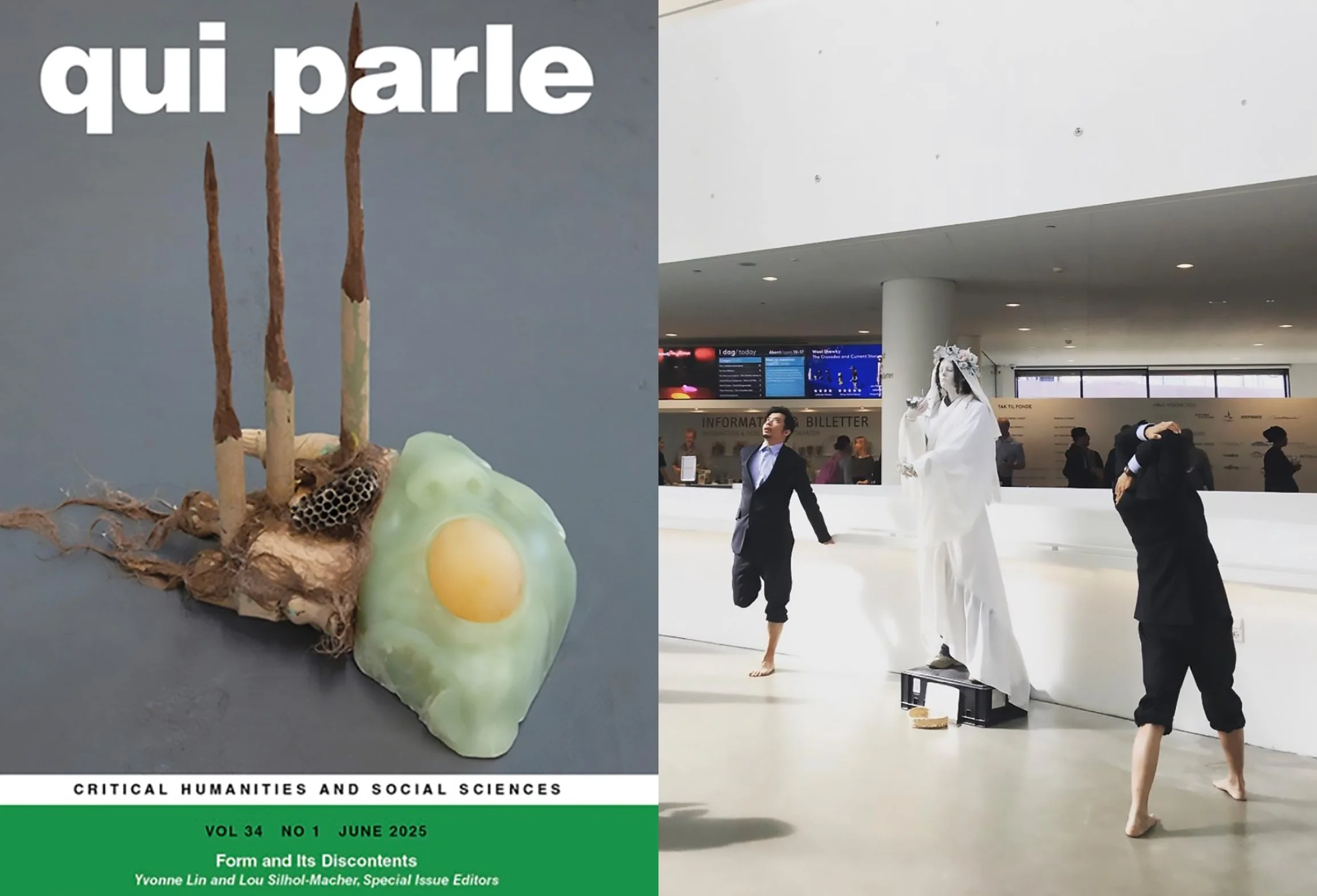Amber Jamilla Musser’s essay foregrounds multiple modes of formlessness in Abang-guard’s emphasis on making the unrecognized labor of museum guarding tangible. Nestled within their hope that greater recognition might help change the political landscape is an invitation to think complexly about how questions of representation are related to those of form. This is because their work shows how the ability to perceive form often relies on submerging something else—a condition of possibility that we might describe, in turn, as “formless.” However, the essay also argues for thinking beyond an equivalence between invisibility and formlessness by examining how Abang-guard produces a formlessness that is atmospheric and engulfing, thereby shifting the affective and political registers through which formlessness is understood. Instead of focusing only on invisibilization, Abang-guard stays with the excess of formlessness, amplifying our ability to perceive the uncapturable by labor or even representation.
Invisible Bodies Exhibition at HUB-Robeson Galleries
The HUB-Robeson Galleries at Pennsylvania State University hosts the Invisible Bodies exhibition, curated by The Border Gallery and Emireth Herrera Valdés. The show explores migrant labor from an artistic point of view will be on view from Octbober 10, 2023 - February 18, 2024.
Invisible Bodies examines the relationship between migration and labor; bringing attention to the overlooked stories of unseen individuals within society. The exhibition displays the resilience, determination and hierarchical structures tied to immigration and race in the U.S. It includes 15 artists who have created socially engaged projects, paintings, sculptures, installations and performances. These works reflect on the demanding nature of labor and its undervaluation.
The exhibition also looks at the gender and racial aspects of migrant bodies as non-citizen workers. These workers play a crucial role in shaping today's society. The gallery's green walls symbolize support for an open immigration system. This allows immigrants to contribute to the nation's labor force. The featured artists include Abang-guard (Maureen Catbagan + Jevijoe Vitug), Bianca Abdi-Boragi, Magdalena Dukiewicz, Brendan Fernandes, Billy Gerard Frank, Zac Hacmon, Julia Justo, Jodie Lyn-Kee-Chow, Jamie Martinez, Zahra Nazari, Michael Pribich, Lina Puerta, Coralina Rodriguez Meyer, Luis Alvaro Sahagun, and Manon Wada.
Art of the Guardians Panel Discussion at the Smithsonian
It was an honor to be a part of the “Art of the Guardians” panel discussion at the Smithsonian on Tuesday, October 18, as part of the National Conference on Cultural Property Protection. The session explored how creativity and a love for the art that guards protect enabled museum security personnel to respond to, endure, and recover from the most acute challenges presented by the Covid-19 pandemic. Panelists from The Metropolitan Museum included my colleagues Lambert Fernando @lambfern, Jevijoe Vitug @jevijoe, Emilie Lemakis @emiliebunnyl, and Louisa Lam.
During the discussion I mentioned that what I've learned to value during this difficult time is the complex humanity of my colleagues who deserve respect and admiration beyond being a body in a uniform. We've learned to look out for each other more and care at a deeper level. We have learned that each of us have rich lives and artistic visions that is in itself an untapped living cultural asset within museums. Through their lived experience, museum workers’ provide a valuable educational source that would further inspire and connect visitors to the art within cultural institutions.
The unseen that holds all that is seen
Dark Matter - doorway, art object shadow, guard’s foot (The Metropolitan Museum of Art)
This series is a meditation on the question of representation and the perceptual conditions that enable us to see not only art, but also multiple forms of difference. I photograph staircases, ceilings, passageways, and guards within museums, essential components that are seldom considered. They occupy a complicated relationship to functionality and value, much like the conditions of labor within capital. These triptychs center and translate peripheral bodies and spaces into alternate forms of possibility and agency by activating strategies of temporal looping, listening, and shadow work. I approach representation through sensation, in order to perceive the fullness of what is absent within the Western frame. These aesthetic disruptions shift dominant paradigms of objectification and labor to produce radical reorientations.



